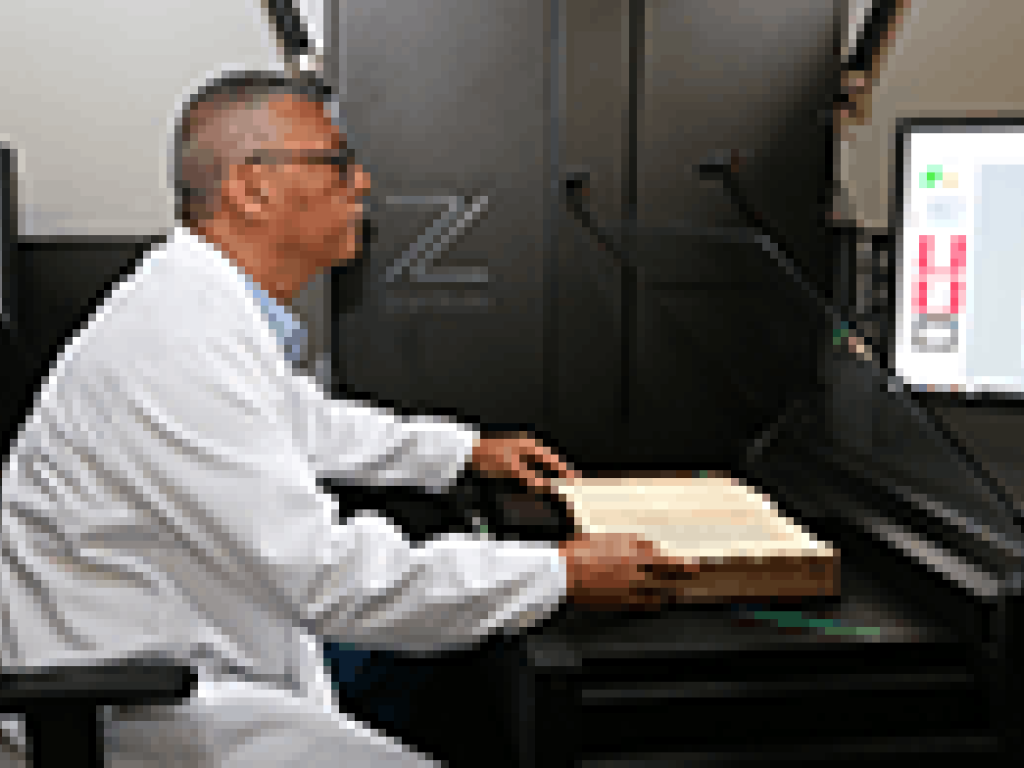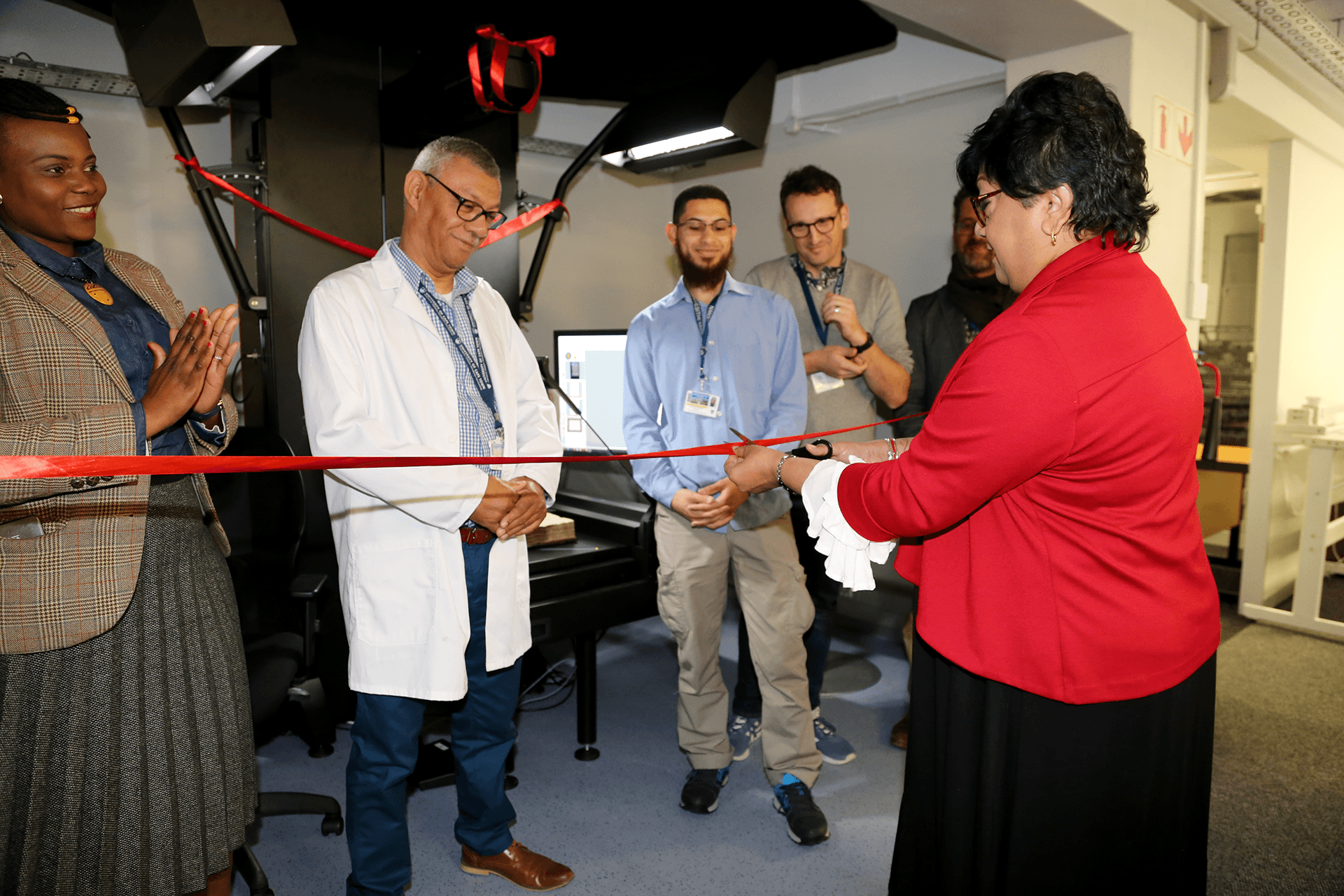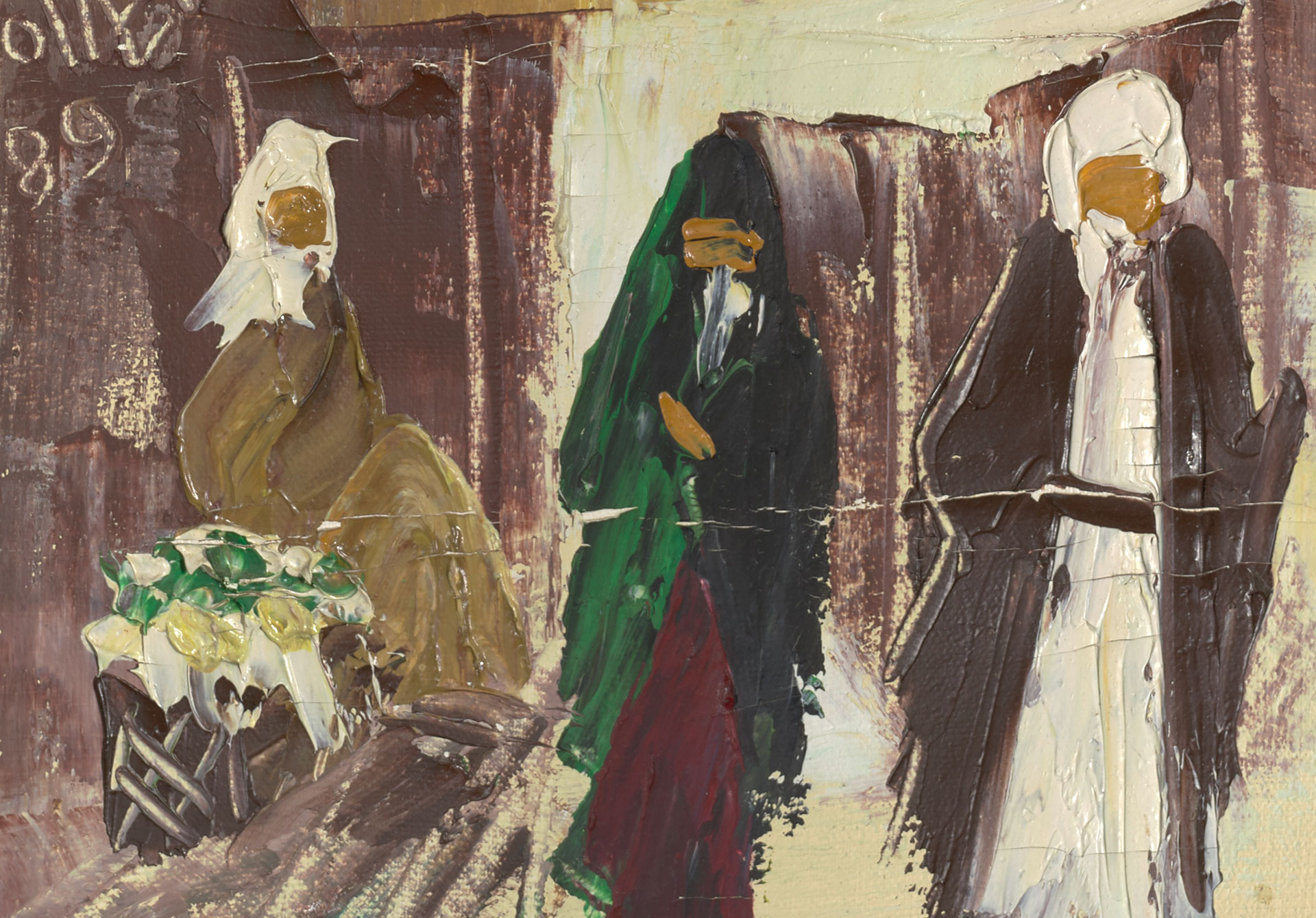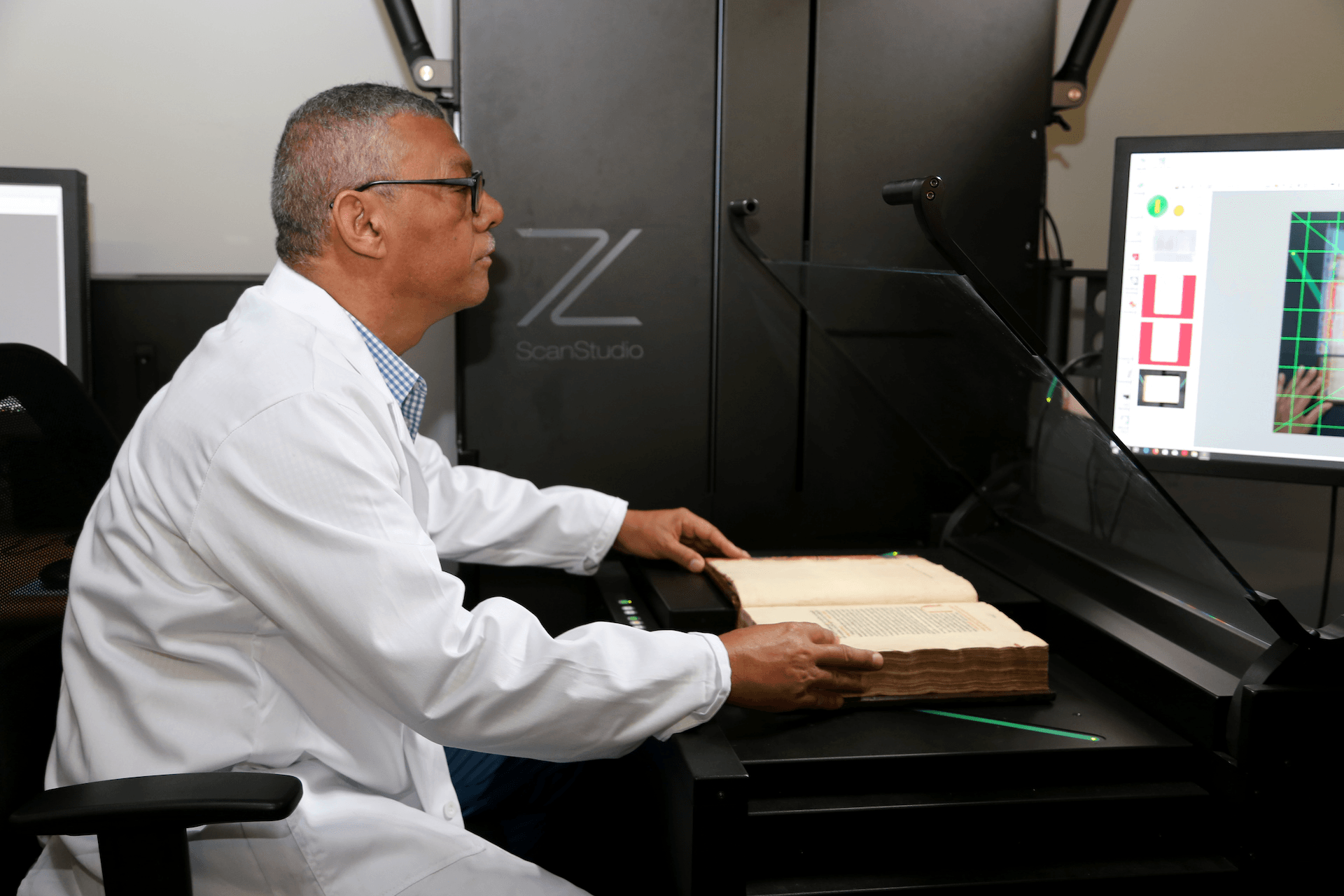New digitisation scanner, a first in Africa


UCT Libraries ED, Ujala Satgoor cuts the ribbon at the launch of the Zeutschel ScanStudio in Jagger Library.
Friday the 13th is usually heralded as the start of something ominous, but for Digital Library Services (DLS) it was the start of a new digitisation adventure. The staff of the libraries gathered in Jagger Library to witness the launch of the Zeutschel ScanStudio, the first digitisation scanner of its kind in Africa. The DLS team opened the event with a welcome from DLS head Niklas Zimmer, followed by a ribbon-cutting ceremony by Libraries Executive Director, Ujala Satgoor. A much-awaited demonstration by Thomas Slingsby and Mark Hamner from DLS followed to a captivated audience.
The transition from conservation to preservation compounds the degrading of digitised materials. The introduction of the Zeutschel ScanStudio aims to revolutionise the Libraries digital preservation efforts while making UCT Special Collections holdings accessible for academic research, Satgoor explained. UCT Libraries can now adhere to international imaging standards and bring about collaborative learning amongst peers and extend the freedom of information beyond UCT added Zimmer.

Painting brushstrokes from an oil canvas painting digitised using the Zeutschel ScanStudio. Painting by Jollet, 1989.
A snapshot in time
Similarly to a photographic studio, the scanner is positioned in a space with low lighting. At the moment of exposure, the scanner provides illumination that is even and close to 98% sunlight, while blocking unnecessary light.
With a 100-megapixel camera sensor, a precise image is captured like a "snapshot in time" on a surface that remains the same, explained Zimmer. At magnification, it reveals the intricacies of brushstrokes on a painting, something you can't see with the naked eye. This was demonstrated during post-processing by Mark Hanmer and Thomas Slingsby from Digital Library Services.
The studio comes with other peripherals like a lightbox for the digitisation of small prints, and larger tables for the scanning of maps and images up to A2 size.

Mark Hanmer from Digital Library Services aligns a book for scanning.
Time-saving during post-processing
Several pre-filters can be set up before scanning, saving a large amount of time during post-processing, explained Slingsby. The digitisation of theses which usually take up to 3 days to scan, can now be scanned in an hour, added Hanmer. Slingsby cautioned that page-turning must still be manual for the handling of fragile materials.
For People and Heritage
Zimmer reminded the audience that the Zeutschel ScanStudio is a machine and that it is "not about the technology" but about the people who are needed to run it. The scanner will allow UCT Libraries to contribute to the digital preservation of heritage, not just within our region or nationally, but across the continent, added Satgoor.
Being at the forefront of this new technology opens up a new world of potential collaborations beyond UCT. Satgoor ended the ceremony by inviting the UCT community to explore what the scanner can achieve to further their academic journey.

Niklas Zimmer addresses staff at the launch of the Zeutschel ScanStudio in Jagger Library.